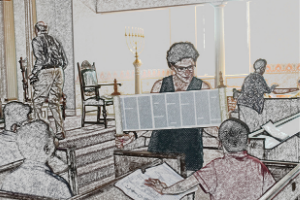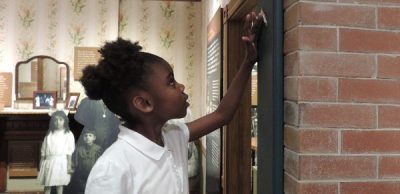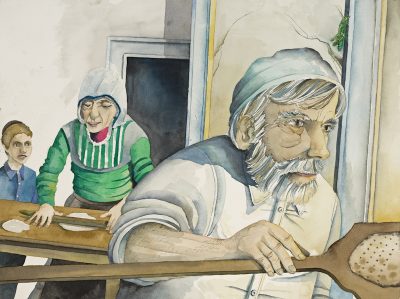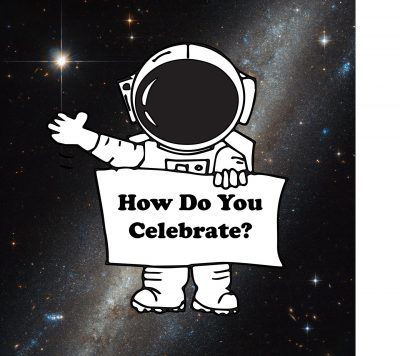Sharing Stories of Passover

Staying Connected with JMM: Educator Newsletter

Dear Educators,
Holidays are often a time to share stories, songs, and food with family and friends. In your (virtual) classroom they can also provide a wonderful opportunity to introduce students to different cultures and religions, express personal experiences, and learn more about each other.
This week Jewish people all over the world will be celebrating the holiday of Passover. We’ve compiled some great stories to watch and read and a whole passel of Passover projects to do with the family to help introduce students and their families to Passover.
Our Executive Director, Marvin, has taken the time to create a virtual afikomen search for this year’s unique Passover circumstances. The afikomen is a piece broken off from a matzah, or the traditional flatbread, during a Seder and put aside to be eaten at the end of the meal. It is hidden during the Seder to be searched for by the children. Keep reading to learn more about matzah’s role in Passover.
As always, If you have thoughts on more ways we can support you, please reach out any time! Have a happy Passover.

One of the most important traditions of Passover is to eat matzah. Matzah is the unleavened cracker-like bread that Jewish people eat on the holiday of Passover. Passover celebrates the Israelites’ (Hebrews) exodus from Egypt.
Matzah comes from the story of this exodus, as the Israelites had to leave Egypt in a hurry without waiting for their bread dough to rise. In commemoration of this story, Jewish people eat matzah and avoid all leavened foods (like bread, crackers, pasta, and cake) during the 8 days of Passover. The rules for baking matzah are that it be made and cooked within 18 minutes.
At the Passover dinner, matzah is referred to as the “bread of affliction” or the “bread of suffering.” Its dry and crackly texture reminds Jewish people of the difficulties their ancestors faced when they were slaves in Egypt.

“…Downstairs, my new families built a big oven, brick by brick. Every Spring they heated that oven, and its fire warmed my insides. When the oven was very hot, Aaron and Isidor carefully mixed flour and water. Quickly, quickly their mothers and aunts rolled the dough out flat. Singing and praying, their fathers and grandfathers slid it into the oven with big wooden paddles. One minute, two minutes, three, and out came crispy brown-flecked matzoh, unleavened bread to eat during the Passover holiday…”
In the lower level of the Lloyd Street Synagogue, there is a matzah oven. The matzah oven was used during the time that the Shomrei Mishmeres Ha-kodesh community worshipped inside the building. JMM’s picture book The Synagogue Speaks (now available as a digital flipbook) is a great way to introduce students to this historic Baltimore community and tradition. In our Introduction to Judaism Educator Guide there is an accompanying activity to support students as they read the book.
Interested in more books to teach about Passover? Check out a suggested reading list here.
Wondernauts

Celebrating in Space!
During the holidays, every family has their own traditions. Holidays are a time for people to come together. Sometimes you aren’t able to be with your family and friends in person. Astronauts on the International Space Station (ISS) are far away from their homes. During their time in space, they might miss holidays taking place on earth.

Celebrate Cultural Differences!
During the holidays, families often gather for special meals. Food has a strong relationship with cultural traditions.
The team of astronauts that work on the ISS is from all over the world. Just like students in your class, these astronauts might speak different languages, wear different clothing, or have a different skin color. They also might have different opinions. These things are called cultural differences.
In this activity, explore food as a way to learn about, and appreciate each other‘s cultural differences.
Looking for other hands-on activities related to space?
Check out our Wondernauts website.
We connect people to Jewish experiences and Maryland’s Jewish community to its roots.
We inspire everyone to explore history, take action, and imagine a better future.
For more posts from Paige Woodhouse, School Program Coordinator, click here.
For more education newsletters, click here.
